Interview With Designer Julian Hakes
Architect and shoe designer Julian Hakes is the brains behind a whole new kind of footwear...
Stylish looks for less
Architect and shoe designer Julian Hakes is the brains behind a whole new kind of footwear – ones without a foot plate! His creations “mojito shoes” resemble a beautiful piece of art that can also be worn on your feet. Discover the story behind this fabulous footwear in the following exclusive interview.

Firstly could you please tell us a bit about yourself and your background?
I grew up in the beautiful Yorkshire countryside in the north east of England. As a child I was always drawing and making things and I wanted to be involved in design and found that architecture gave me the widest possible training and scope to apply my skills.
I completed my architecture training at Cambridge University and then studied an Mphil in Environmental Design.
Almost straight after graduation I founded an architectural firm in London in 2000 and we worked on buildings and land mark bridges on sites across the world. Then in 2009 I released early concepts for a new shoe idea - and things started to change…
The concept of your shoes is beyond original; where did this unusual idea come from? How did this shoe creation start?
Creation came from a strong feeling that ‘traditional’ shoes had stopped being traditional. By that I mean they stopped evolving. The whole point to a tradition is that it evolves so the things we design today are the history for tomorrow.
I was exploring this idea in a number of design areas and one area was footwear. There are many examples in the design world when something stops evolving the resultant design is often a poor copy of something before. The product often becomes inefficient, more expensive to make, takes longer and uses more material than you need.
So I simply asked the question and then decided to do something about it.
"To me fashion is simply architecture for the body."
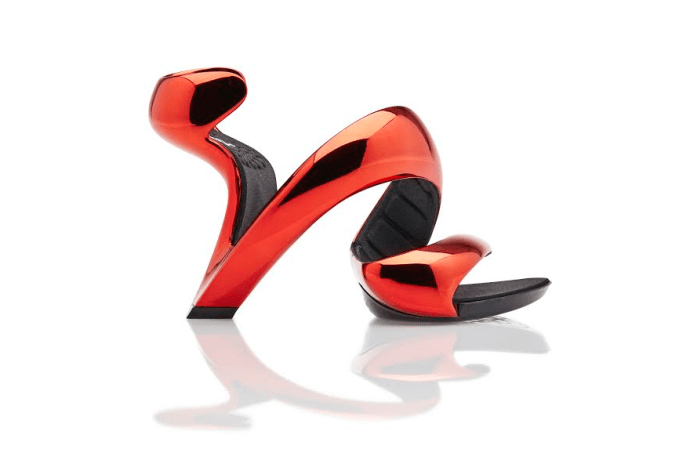
What sparked your passion for designing shoes?
To me fashion is simply architecture for the body. We clad over it, wrap it, reveal it and enhance it through form and material. Just as architecture wraps space and function. Shoes are like smaller wearable pieces of architecture.
What inspired you?
The shape of the shoe comes from study of the natural form of the body mechanics, how we stand how we walk and how we transfer load to the gourd through a shoe. One clear example of this is the foot print in the sand as it shows how much pressure the body puts down.
If you think about a higher heel you have to support the heel and protect the ball of the foot - so I wondered why there was a need for the middle part. There was very little if any load on that part of the shoe?
"Mojito is an elegant, sculptural shoe which wraps around the foot with a soft and comfortable padded lining."
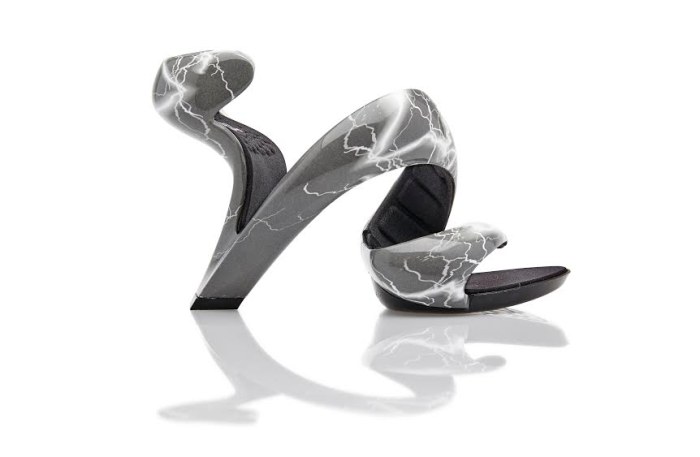
Which architect do you most admire?
I have always enjoyed the work of Japanese Architect Tadao Ando - he uses a very simple palette of materials and his buildings are sculptures for light.
Could you describe the Mojito Shoe?
Mojito is an elegant, sculptural shoe which wraps around the foot with a soft and comfortable padded lining.
We only use the material needed to protect and support the foot. It feels very light and cool on the foot.
Mojito is made from an advanced composite construction which is engineered to very high tolerances to give a comfortable fit yet very light. We actually make the shoes in a high-end ski and snowboard production facility, as they have the right technology and manufacture techniques.
To which occasion(s) is the mojito shoe most suited?
Depending on which colour you select the Mojito is at home by the pool, the centre of attention at a party, highlight of a red carpet, and always present on the catwalk. I have also been very pleased to see Mojito featuring in many fans’ weddings.

This concept has pretty much revolutionised the design of shoes. What do you think?
That is very flattering but I didn't mean to do that! I just set out to ask why things had become a certain way. In many ways I think it was sort of inevitable in that if I didn't do it sooner or later it was going to happen. I started this process in 2006 so it has still taken some time to get to this stage.
There have been so many advances in technology and design that shapes and forms exist now which were simply too complicated to draw or produce.
At the same time changes were being driven from a more technology-aware and demanding consumer. Many of us have phones and smart watches with more processing power than the worlds most advanced super computers only 20 years ago, yet our clothes and shoes are made almost the same way as hundreds, and in some sandals thousands of years ago.
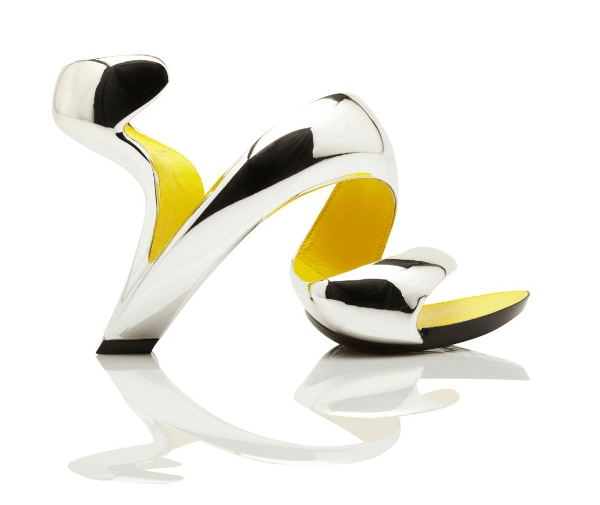
Where do you see the evolution of shoes in 50 years’ time?
How about 5 or 10 years! you don’t need to look into the future as the technology is already here but it is not in the mainstream yet. In our lifetime we will have the ability to use a home additive manufacture (another name for 3D printing) machines which are easy to use and about the size of a microwave.
You will get an update on your phone or watch that a new design is available for either a shoe, watch strap, glasses frames, phone case or whatever you can think about. You will press print, go to work, come back and the new “thing” is ready. Or set it going before you go to bed and the new shoes are ready in the morning. Just like the story of the elves and the shoemaker.
It is quite possible that Zalando will probably have their own machines which will be given to consumers through some form of netflix type of rental model. You can then subscribe to the download services and get new updates, accessories from all your favourite designers direct to your home.
There will also be some form of hybrid system when the outsole or parts which normally require complicated moulding are 3D printed at home and then a hand-stitched fabric or leather upper is sent to you via courier. You then simply snap or click the two parts together just like swapping an iPhone case.
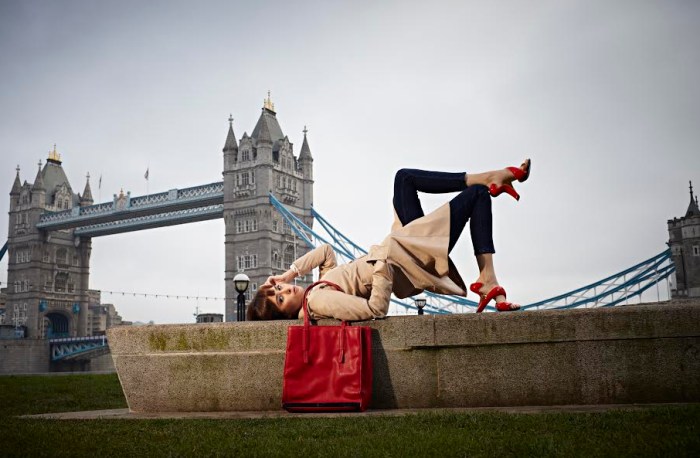
These shoes are obviously designed for women. Do you think a similar concept could ever be applied to men?
The mojito actually started out as a paper mock up on my own foot then I added the heel. A mojito flat is in production but before that is coming a range of completely new Julian Hakes styles.
I will certainly do menswear at some point, especially as I also have a sample foot size for mens’ shoes. :)
What are your thoughts on 3D print?
We are clearly at the start of a manufacturing revolution where everyone’s home is their own mini factory. My 2 children see our 3D printing machines in our studio and to them it’s normal. Even if they lose a piece from a favourite block-based construction toy - they can simply go online, download and print a replacement.

Some early 3D printing machines were limited in size but with new models such as the Ultimaker 2 can make full size shoes in one piece and in different materials. There are lots of different techniques and some industrial scale machines can make 3D digital models into physical parts using aluminium, titanium and gold.
To designers like myself there will also be a great change as I think rather than selling physical product we will find ourselves starting to license our 3D data to companies such as Zalando which is then made available through Zalando online 3D print store.
To start with this means designers need to be fully fluent in digital design and also have a very good knowledge of the process of 3D printing.
There are not many shoes which can be 3D printed at the moment. I am pleased that the Julian Hakes Mojito shoe was the world’s first 3D printed catwalk shoe is it ready for the future - when it catches up.
"The mojito actually started out as a paper mock up on my own foot then I added the heel."
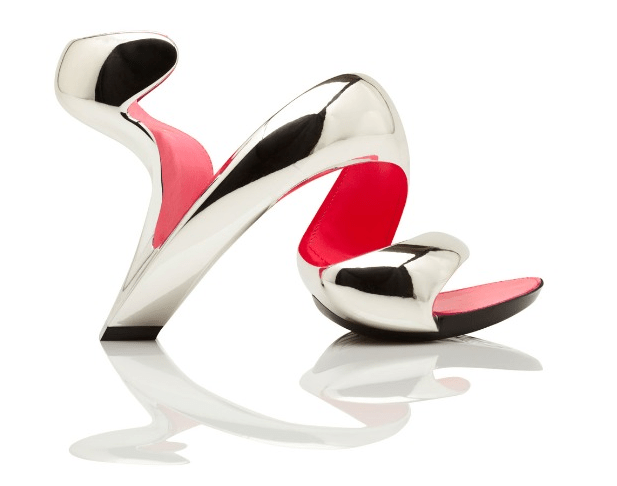
What can we expect from your designs in the future?
When I designed mojito I also thought what other designs of footwear my approach could discover. So I designed a much wider collection. However, the Mojito took to the catwalks first. It was certainly the most challenging and difficult so not the easiest process but it is very unique.
Several brand new Julian Hakes styles will be revealed this coming SS16 fashion show circuit at London Fashion Week. The new collection includes a wedge type of shoe in 2 heel heights, a new futuristic sculptural sandal and a new take on a trainer.
We have been in development for several years on the full line extension and I can’t wait to reveal what we have been working on.